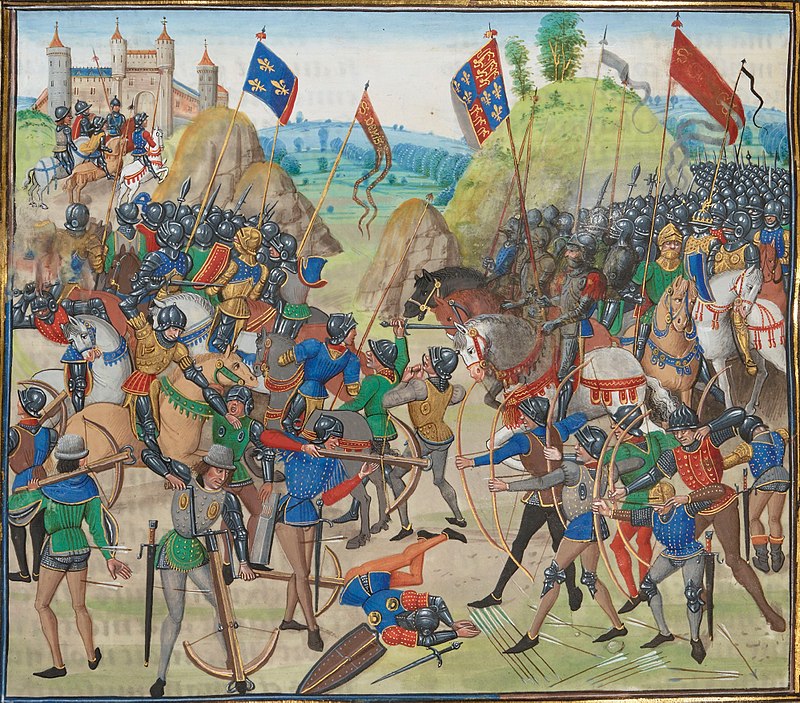Archery features heavily in the fantasy genre. In fact, I cannot recall a fantasy story that didn’t feature a bow or arrow. It’s one of the reasons why I love the genre so much.
But I’ve learned the hard way (always the hard way isn’t it?), that research is necessary when it comes to such technical aspects. Not only will you look like a genius for knowing crazy facts about bows and arrows, but you’ll have a tale enriched with details that readers will love. This, in turn, will help you create amazing fantasy archer characters and fantasy crossbowman.
So below, we’ll look at the fantasy bow and arrow—how they work, how to wear them, how you can make yours different and unique, and we’ll even look at how to come up with your own type of fantasy arrow.
To help you out further with your fantasy archer woes, I’ve done a bit of the required research, and below you’ll find a nifty guide to all things bow and arrow, packed with details for you to use in your own fantasy short stories and novels.
There are sections dedicated to creating a fantasy arrow, others that explore how to design a fictional archer, a section summarising the key points covered, some FAQs on archery in the fantasy genre, and links to other resources you may find useful.
Select A Section
- The Fantasy Archer
- What Is An Arrow?
- How To Create A Fantasy Arrow
- How Fast Can Arrows Fly?
- Applying Reality To A Fantasy Arrow
- The Bow
- The Fantasy Bow and Arrow
- How Do You Shoot A Bow And Arrow?
- My Own Experience Of Archery
- Fantasy Archery And The Crossbow
- The Bow and Arrow In The Fantasy Genre
- Coming Up With Names For Fantasy Bows
- Fantasy Archer Ideas
- Fantasy Archer Art
- A Summary Of Archery In Fantasy
- Extra Resources On The Fantasy Archer
- Fantasy Archery FAQs
The Fantasy Archer
There’s many a memorable fantasy archer in our favorite books and movies. I’m sure there are half a dozen people flying around your mind now (namely Legolas). Characters like this have obviously left a significant impression on us and it’s important to break things down to see why.
First of all, archery is tough. As we’ll see below, it requires years of patient practice to master. That means that anyone who can shoot the wings off a bee from 100 paces away is mind-blowingly talented. Naturally, we enjoy watching talented people at work, especially if they’re on the forces of good and trying to save the day. So in short, their skill makes them likeable (which I’m sure we can agree is the case with Legolas).
Secondly, a fantasy archer can have any kind of background because it’s a skill that can be learned by anyone. It’s not as restrictive as sword-fighting for example, which required the ownership of an expensive hunk of metal. It’s also easier to learn than sword-fighting or other types of weapon-based training.
To give you more insights into archery in fantasy, check out the video below which has some fantastic examples. Analyse their distinctive features and try to pin down what makes them likeable (or dislikeable).
What Is An Arrow?
It’s always helpful to begin by breaking down some key phrases. An effective way to do this for our subject matter is to examine the anatomies of both a bow and arrow. Below, you can see a handy image of the key components of an arrow.
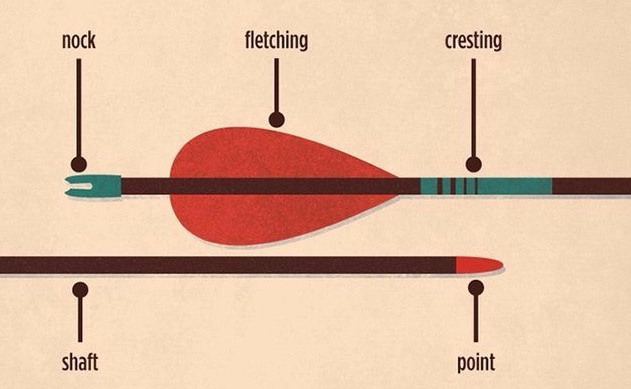
The anatomy of an arrow
The nock is to hold the arrow to the bowstring.
The shaft is sharpened into a point, or an arrowhead attached to the end. Early arrowheads were made from bone, stone or horn, with metal arrowheads like bronze and iron, developed later.

An ancient Greek/Scythian bronze arrowhead
There were various ways of affixing the head to the shaft (I can hear your dirty minds working). An early method was using a glue-type resin made from plants. Another was a process known as hafting, which involved softening the shaft with heat or water so that slits could be cut in its heart.
The arrowhead, carved in a suitable way, was then fitted into the holes. Another process was split-shafting. This involved splitting the end of the shaft lengthwise, inserting the arrowhead, and securing it using sinew or rope.
Getting any ideas for your own type of fantasy arrow? 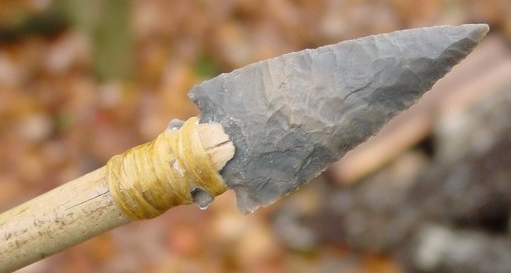
A split-shafted arrow
Some lazy bastards just spat on the end and shoved it onto the shaft right before they loosed, enough for the head to stay on the shaft and lodge in the body of an enemy. I could definitely see some kind of lazy fantasy archer doing this.
The feathers used in medieval fletching came from goose, turkey, duck, grouse, pheasant, even pigeons. Goose, however, was deemed the best. This type of feather possesses oils that make it waterproof, to a certain extent. The size of the feather depended on the purpose of the arrow.
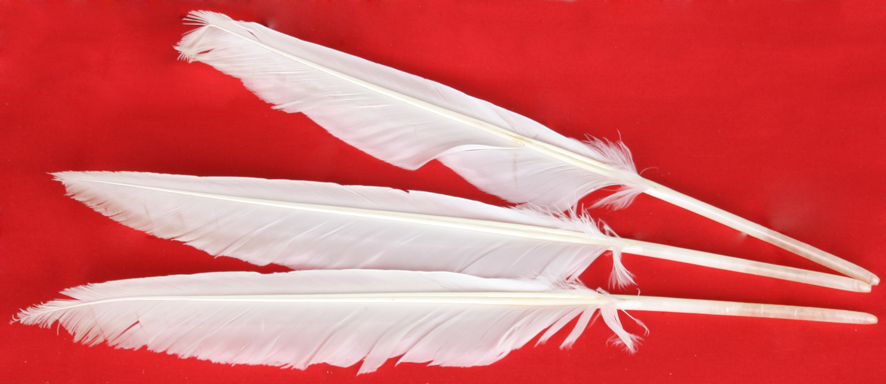
White goose feathers used in fletching
How To Create A Fantasy Arrow
So we’ve looked at the medieval arrow, how can we adapt that to our fantasy novels and stories? One way is to play around with the design. You’ve seen all of the different components above and the purpose they serve. Taking that blueprint, you can begin to weave your magic, twisting features and devising your own unique angles. Let’s take a look at some fantasy arrow concept art: 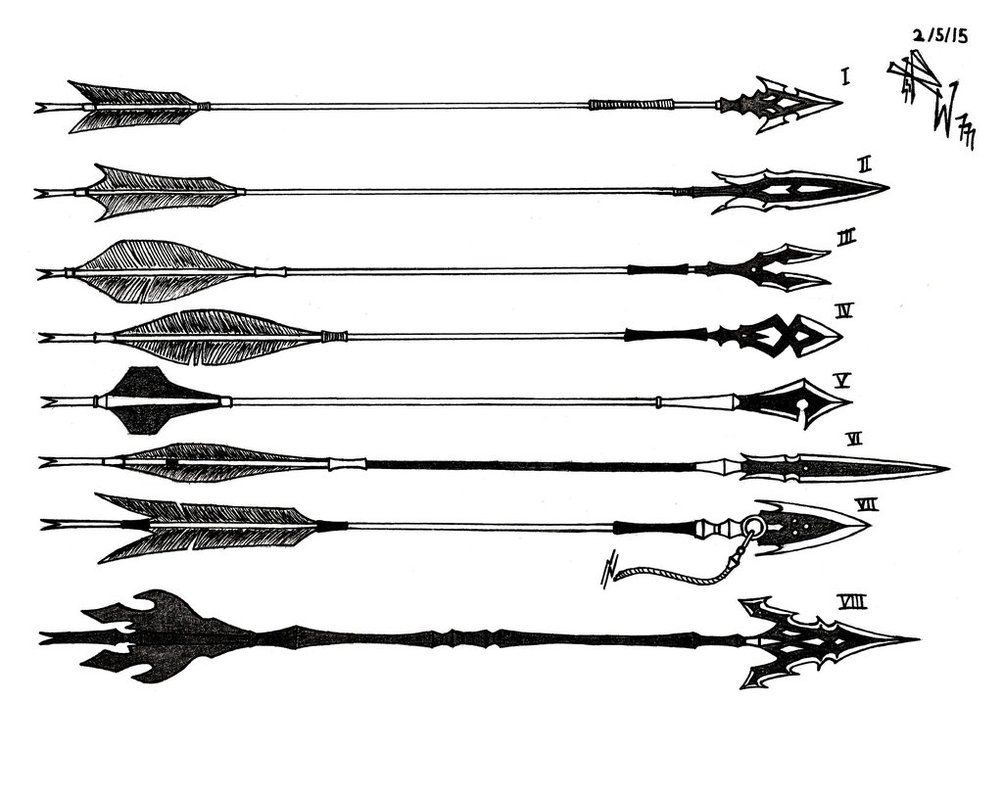 There are a few nice flourishes in the image above. Just take a look at some of those fantasy arrowheads. Some are narrow and pointed. One has two points instead of one. Some have barbed points, which would make it hard for anyone to pull the arrowhead free. The last arrow example has something of a demonic vibe to it. For more inspiration, you may find my guide to creating fantasy weapons quite useful. Read it here.
There are a few nice flourishes in the image above. Just take a look at some of those fantasy arrowheads. Some are narrow and pointed. One has two points instead of one. Some have barbed points, which would make it hard for anyone to pull the arrowhead free. The last arrow example has something of a demonic vibe to it. For more inspiration, you may find my guide to creating fantasy weapons quite useful. Read it here.
How Fast Can Arrows Fly?
Arrows decelerate quickly once loosed, and the velocity of an arrow was important in penetrating metal armor. Here’s a brief distance/damage guide to give you an idea:
-
From 80 metres an arrow would merely dent steel armour, and leave a knight feeling pretty invincible.
-
From around 30 metres away an arrow would puncture steel but would cause only a bruise, the padding beneath the armour coming to the rescue.
-
From 20 metres away an arrow would penetrate clean and deep, as the French and Genoese crossbowmen discovered at the Battle of Crécy (1346)—a battle won by the longbow, and one worth reading about.

A depiction of the Battle of Crécy
Arrows were stored in quivers made from oiled canvas to keep them dry. Now you may see fantasy archer art showing quivers on people’s backs. While it may look cool, it can be quite tricky to draw an arrow, plus you have the risk of snapping your arrow on the quiver or breaking it in two as you pull it free.
Instead, during the Middle Ages, in particular, quivers were kept on the hip. Importantly, it was front-facing as opposed to back-facing. To have your arrows pointing behind you could see them fall out before you get to shoot one.
The only way to cleanly remove an arrowhead was to push it through the victim’s wound and out the other side. (I’m swallowing vomit here). If bone stood in the way, then depending on how good your doctor was, it was pulled free with forceps.
Applying Reality To A Fantasy Arrow
We’ve taken a look at the mechanics of how an arrow works. Now, how can we tweak that to a fantasy bow and arrow?
- Think about how the arrow is constructed. What can you do to tweak your own?
- Why not play around with the materials used to make your fantasy arrow. Could they be fletched with the feathers of some magical bird, that makes the dart travel faster and with more force?
- Perhaps you have an enchanted arrowhead?
- Or a special type of wood to make the shaft from?
- Maybe a unique type of bowstring?
- Think of ways you can add enchantments. For instance, in one of my stories, a character has enchanted arrowheads that emit electric charges when they land.
The possibilities are many when it comes to designing a fantasy arrow. Next, we’ll look at bows and how you can take your fantasy archery to the next level.
The Bow
The short bow emerged first, but, as the name suggests, it had limited range, and as a result, limited effectiveness in battle. The longbow changed archery and warfare forever and spurred on a whole new age of battle tactics.

Anatomy of a bow
Most longbows were made from a curved stave of, amongst others, yew, ash, hazel, maple, and elm. Yew was deemed the best because it can withstand a great deal of tension. The strings tended to be made from hemp (taken from the world’s favourite plant) because it’s strong, easy to manufacture and inelastic.
The longbow was somewhere between five and six feet tall and tended to match the height of the wielder to allow for a full draw. Like arrows, a bow was kept in an oiled canvas bag to keep it dry.
The shape of the bow was very important. There were a few different shapes, the main being:
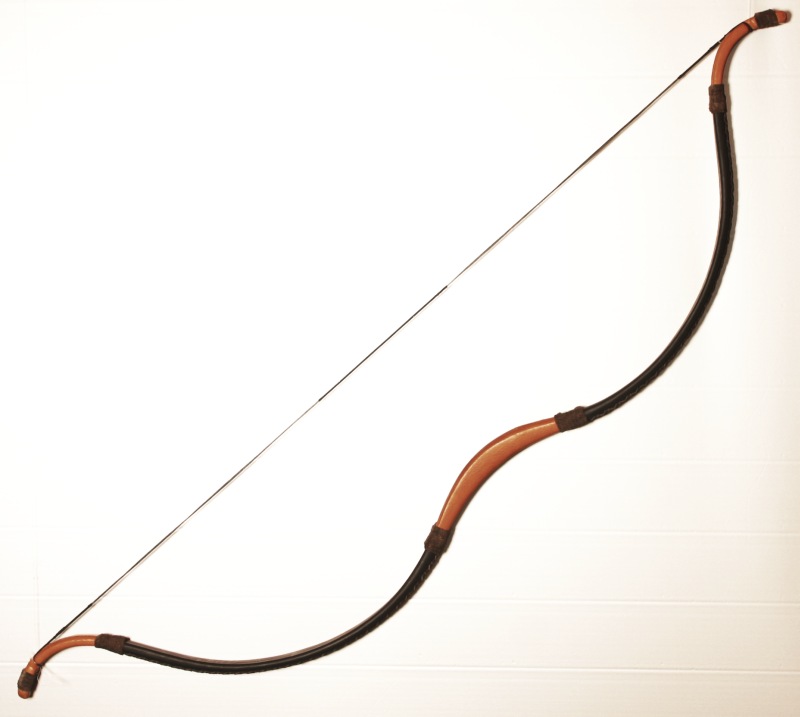
The recurve: a bow in which the tips curve away from the wielder. As the bow is drawn these curves straighten, and when loosed, snap back to propel the arrow at a greater velocity. To achieve the shape the tips were boiled in water. Self-bow: a simple bow made from a single piece of wood with the tips pointing away from the wielder.

How could you adapt these bows to your own fantasy archer? Could the stave be made of a magical type of wood that allows a bigger draw?
The Fantasy Bow and Arrow
As we’ve seen above with creating a fantasy arrow, there are lots of possibilities when it comes to creating something unique and original. And the bow is no exception to that. Looking at the technical sides to how a bow works, just think of what you can do to give your ordinary medieval weapon a fantasy edge…
- Think of the structure of the bow. Could you give it a unique shape that helps increase velocity or power—strong enough to penetrate any fantasy armor?
- Bowstrings are an important part of the weapon. Could your character have a string made from the hair of a mythical unicorn?
- And, of course, there are magical enchantments in the crafting of weapons too.
How Do You Shoot A Bow And Arrow?
Mastery of the bow required a great deal of practice. Training involved lining up and aiming at markers set at various distances and gradients. A key skill was reading the landscape to note any dips, rises or obstructions. The objective was to create a killing zone, rather than aiming for specific targets.
The act of notching the arrow to the bowstring is known as ‘nocking’, and with this, speed was everything—definitely not like me, fiddling for minutes just to get the arrow on the string, all the while swearing profusely. The arrow is then ‘drawn’ back, the string tightened. To keep it taut an archer had to be physically strong, with power generated from the muscles of the back. ‘Loose’ was the order to shoot. “Nock, draw, loose.”
So speed was important, and to accelerate the process in battle, arrows were stabbed into the ground before the archer.
Archers had to be mobile too. If they were overrun they had to move and adapt. Heavy armor was spared, with the emphasis on lightness and portability. If archers did get caught up in close combat most were armed with a blade of some kind, a popular one being a falchion—a one-handed, single-edged sword, similar to a machete, but with a crossguard.
My guide on how to write fight scenes may help you with the logistics of warfare. 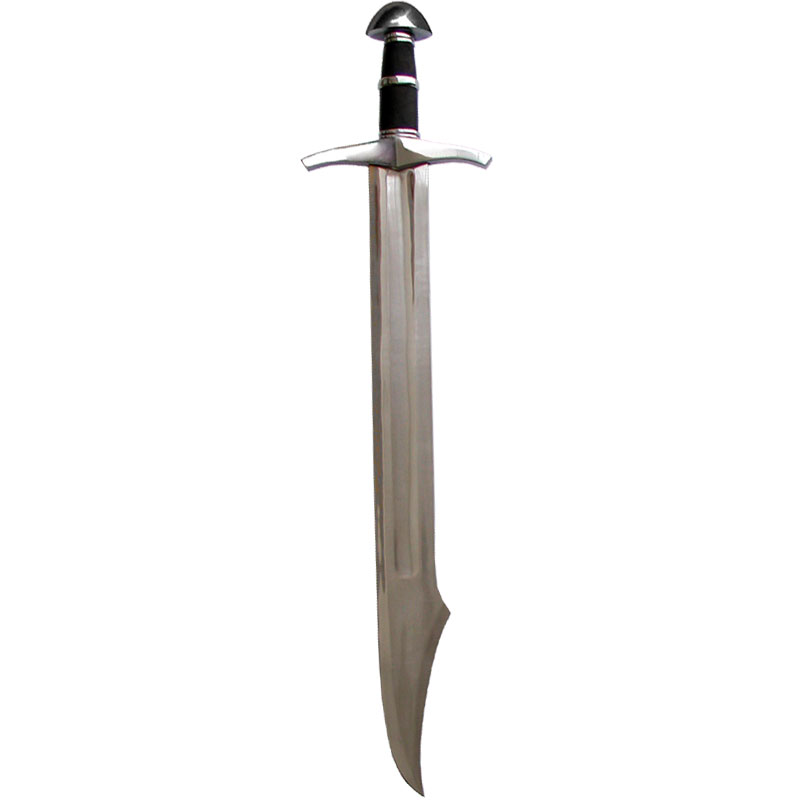
Falchion
Mounted archers became popular during the Iron Age, with the earliest depictions coming from the Parthians of Iran. If you thought shooting an arrow while standing still was tricky, how about firing one from a charging horse. To achieve this, they directed their well-trained mounts with their legs alone.

Mounted Parthian archer
Mounted archers provided a massive tactical advantage, able to harass the flanks of foes, cause disruption and confusion, and inflict casualties. The Parthian shot, as it was known, was a tactic which involved retreating from an enemy while turning the upper body and shooting backwards. Mounted archers were, however, pretty weak against a large force of foot archers, who had a much swifter rate of loosing, as well as a bigger target to aim for.
How To Wear A Bow And Arrow
As writers, it’s important that we understand how to wear a bow and arrow and not fall into the traps laid before us by cliches.
If you want to comfortably and practically carry your bow, slinging it over your back is ideal. It means it’s easy to reach and doesn’t interfere with your movements.
To carry a bow on your back you need the help of a sling. Now, this could be specially designed for archers, or it could be a simple makeshift device using a towel or rag. You can’t just use the string for carrying—made of tough material it’s cut and scratch you, not to mention it getting damaged or even snapping as you move around.
As for arrows, they’re worn in a quiver, ideally at the hip with the feathers pointing forwards so they’re less likely to fall out.
When carrying your bow and arrows and not using them, covering them with waterproof canvas is recommended to keep it in good, usable condition.
My Own Experience Of Archery
A good pal of mine called Ciaron took me shooting for the first time not long ago. Ciaron’s a whizz at archery, and even made an appearance for Team GB once, so I was in good hands. Before my little shooting workshop, I’d studied archery a great deal for writing purposes, but nothing beat the actual experience of holding a bow and loosing an arrow. It taught me a few new details which I’ve since used in my debut novel, Pariah’s Lament. One of the protagonists, Isyara, joins a company of women archers known as the Darts of Pleasure, so I felt like I had to know more in order to write these scenes compellingly. Here are a few unique insights I gleaned:
- As we’ve discussed above, quivers generally aren’t kept on your back. The arrows are too hard to reach! Instead, they hang from the hip. The direction in which they hang is important. If the arrows face backwards, there’s a good chance you won’t find any left when you come to nock—they’ve all fallen out. So quivers are positioned so arrows tip forwards. Easy to reach, and they don’t fall out.
- Archers wear vambraces, or at least one on the arm in which they hold the bow. The reason? Once you loose that arrow, the string snaps forward and can sometimes strike the forearm, causing cuts and lacerations if not protected.
- Archers wear specially designed gloves. These gloves do not cover the whole hand, but one, two or even three fingers. Again, this is to protect you from any injuries inflicted by the bowstring.
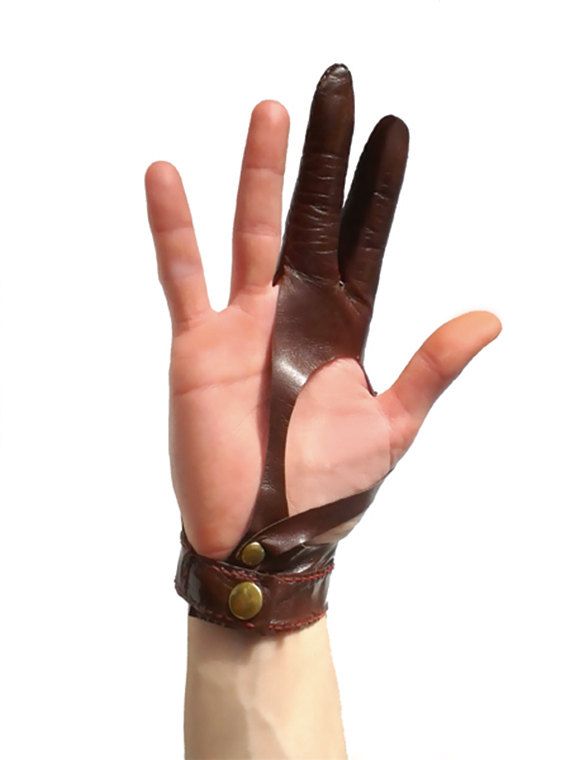

Fantasy Archery And The Crossbow
Compared to the traditional bow, the crossbow was cumbersome. It was, however, easier to shoot and packed a hell of a punch. From close range, armor may well have been made from butter.
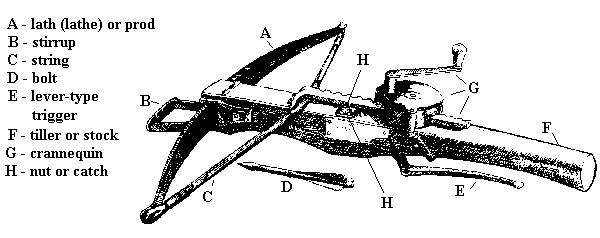
The anatomy of a crossbow
Some medieval crossbows were crafted with horn and sinew, as well as wood. Horn can take great strain, and sinew, such as that of the neck tendon of an ox, becomes stringy when hammered.
The biggest downside to the crossbow was the length of time it took to reload. With some of the earliest crossbows, the user had to sit down and pull the string back to load the bolt. A totally ideal method in warfare…
Devices were crafted to increase this already swift reload speed. A rack and pinion—a winch-type contraption—was one such device (image below). Another was a belt attachment that pulled the string back. Larger crossbows possessed another type of mechanism known as a windlass, seen in the picture below.
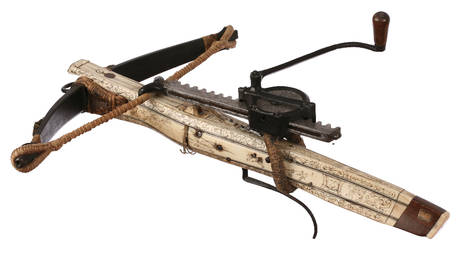
Rack and pinion
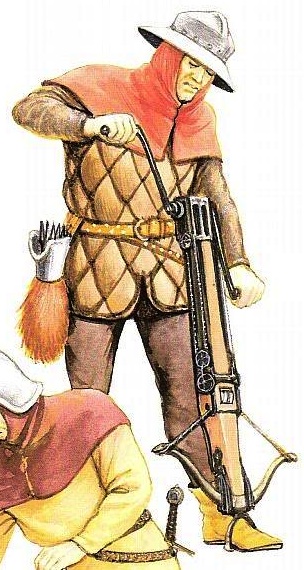
Windlass crossbow (tiring work, as his face suggests)
The crossbow was a weapon rarely used by the common folk. They were high-tech devices in their time, like the floppy disk in the nineties, and as a result, cost a pretty penny.
In warfare, crossbowmen hid behind a large shield known as a pavise. As you can see in the picture below, one man held up the shield, while the crossbowmen worked away behind.
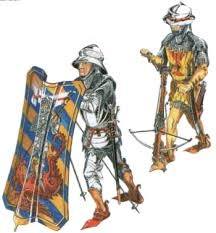
As well as shields, crossbowmen, and archers too, tended to be protected by pike or billmen who formed defensive positions around them, known as hedgehogs, a tactic used to counter cavalry attacks.

Try charging through that
The Fantasy Crossbowman
Crossbows are an iconic weapon. They pack a hell of a punch, but as we’ve seen, they have their limitations. One of the exciting things about creating fantasy crossbowman is to try and address some of these limitations. For example, reloading a crossbow was an absolute pain, taking time to winch and load the bolt. How could magic, for example, aid that reloading process? Another flaw of the crossbowman was the fact that it could only shoot one bolt at a time. Accuracy was, therefore, so important. Otherwise a horde of charging enemies could run you down before you had a chance to get off another shot. Linked to this too was a lack of defence. It was hard to reload crossbow bolts on the move. As we’ve seen, some types of weapons required the bowstring to be winched back into place. The Genoese crossbowman of Italy, fabled for their abilities with this kind of weapon, used to carry shields on their backs. So when reloading, they’d turn around to have some protection. A great example from fantasy fiction of how a writer has sought to address the limitations of a crossbow is in Adrian Tchaikovsky’s Shadows Of The Apt series. Tchaikovsky brings in elements of steampunk and magic to help improve the functionality of the crossbow. So we have almost automatic weapons that can hold more than one bolt.
The Bow and Arrow In The Fantasy Genre
In this section of our guide to fantasy archery, I wanted to look specifically at a few different types of bows from the genre. It really does help to have a visual aid sometimes. If you’re ever looking for inspiration for your own fantasy archer, head over to Pinterest and search for ‘bow and arrow in fantasy’, or something along those lines, and you’ll be richly rewarded. I’ve compiled a few cool images I think you might appreciate below.
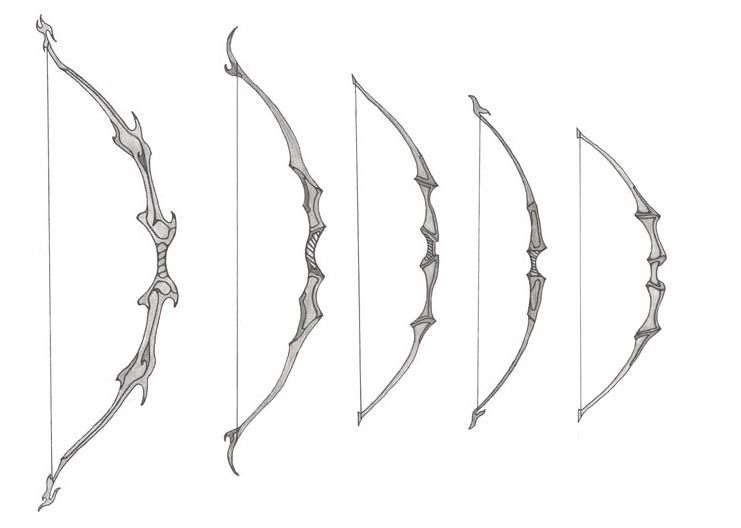
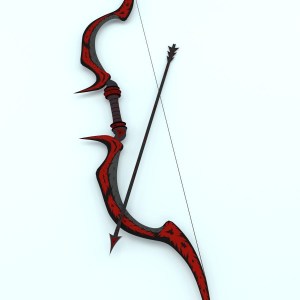

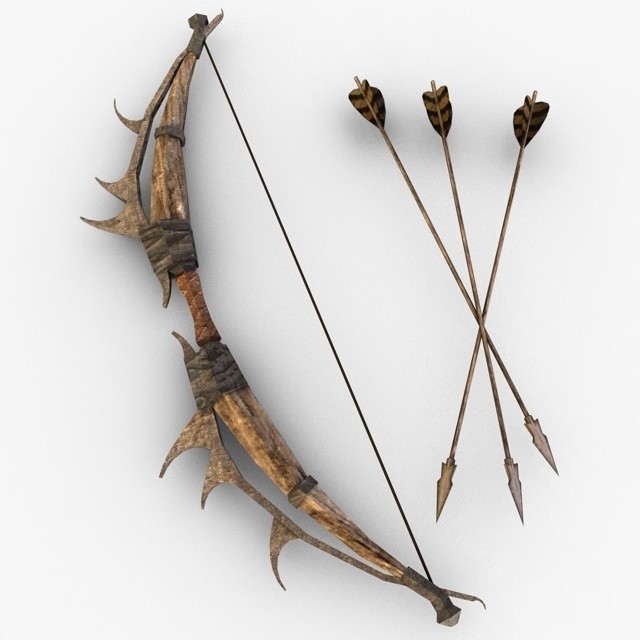
Coming Up With Names For Fantasy Bows
Sometimes when we encounter weapons in the fantasy genre, particularly the legendary ones, they usually have a name. For example, in Game of Thrones, lots of weapons were ascribed names, particularly those that had been passed down through families. There was Oathkeep, Longclaw, Widow’s Wail and Heartsbane, to name a few. The same can apply to your fantasy bow. Here are some examples to spark inspiration:
- Apollo – inspired by Greek mythology, it means ‘crafted from the sun’s rays’
- Eurytus – another name of Greek origin, it was a weapon wielded by Odysseus
- Heracles – Greek again, it translates to ‘made great by being dipping in Hydra’s blood’
- Arash – a Persian name
- Houyi – the Chinese god of archery
- Tristan – an Arthurian weapon that never missed
- Belthronding – Legolas’s weapon in Lord of the Rings
It can help to look at the name for bow in other languages too, such as:
- Arc – Romanian
- Arcum – Latin
- Hark – Albanian
- Upinde – Swahili
- Rosett – Swedish
Fantasy Archer Ideas
There are lots of iconic characters in the genre that we’d define as a ‘fantasy archer’. A character that excels at the skill of shooting, perhaps due to their enhanced senses, like the elf Legolas and his keen eyesight, or maybe with the use of magic. When it comes to creating a fantasy archer, it can help to think about what their unique abilities are, if they have any. For instance, as we’ve seen in Tolkien’s fantasy, elves are synonymous with bows and stereotypically possess incredible eyesight and hand-eye coordination. This enables them them to shoot the wings of a bee, or loose more than one arrow at once. Another potential feature of a fantasy archer character is magic. Depending on the type of system that you employ, you could look to:
- Use magic to enchant weapons. An example that springs to mind is The Elder Scrolls games where players can enchant their bows to drain health or stamina over time, or enchant their weapons with elemental magic such as fire, which inflicts burns as well as a penetration wound.
- Does the fantasy archer themselves possess magical abilities? Do they channel this magic into their weapons, allowing them to shoot arrows packed with magical charges?
These are just a few ideas for your fantasy writing, and the more you read and explore the genre, the more inspiration that you’ll get.
Fantasy Archer Art
Below, I’ve included a few awesome pictures of different types of fantasy archer. Hopefully they’ll give you some inspiration.
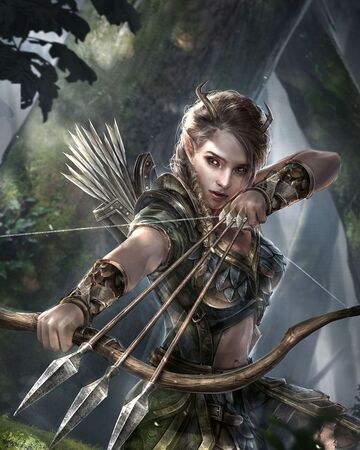
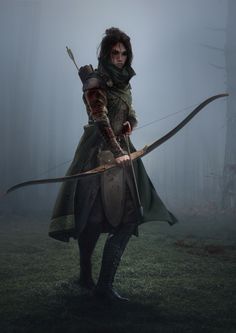
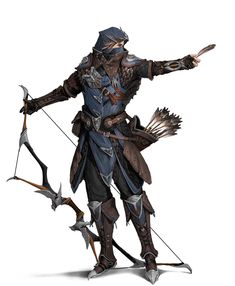
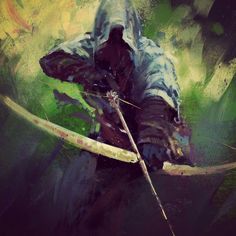
A Summary Of Archery In Fantasy
If you’re writing a story with a medieval setting, chances are you’re going to feature a bow and arrow at some point. It’s therefore useful to understand how such weapons work, even if you plan to warp them with magical enchantments. Below, I’ve included some summary tips to help you when it comes to creating your own fantasy archer or bow and arrow:
- The key to a powerful bow lies in its ability to be drawn back and shot at high velocity.
- The closer the target is to the archer, the more damage the arrow will inflict, penetrating armor even.
- Medieval archers generally wore their quivers on their hips, with the feathery ends pointing forwards. Wearing a quiver on the back or shoulder could reduce the time it takes to draw an arrow.
- Bows were made of high-quality wood like yew and ash. Arrows were made of a mix of wood, natural glues and resins, feathers, and some with a metal ironhead—be it copper, bronze, iron or steel.
- When coming up with ideas for your own fantasy arrow or bow, you can look to play around with the anatomy of it, such as the feathers used or the shape of the arrowhead.
Extra Resources On The Fantasy Archer
Thank you for checking out this guide on medieval archery. Hopefully, you’ve learned some new insights to apply to your own fantasy archery elements of your story. Here are a few more relevant guides you may find of use for your fantasy tales:
- How To Create A Fantasy Castle
- A guide to fantasy medieval castles
- A Fantasy Writer’s Guide to The Siege
- A Fantasy Writer’s Guide to Armor
- Fantasy writing
- How to write a fantasy novel
- How to write battles and fight scenes
- Elven names generator and guide
- Fantasy character names
- The knight of chivalry – medieval knights
- Demon name generator
- Human name generator and guide
- The best communities for fantasy writers
- Orc names generator and guide
- Worldbuilding in fantasy
- Fantasy name generator
- Worldbuilding guide and tips
If you love a good history book, then I recommend the following. Truly insightful. By Sword and Fire, Sean McGlynn
Fantasy Archery FAQs
In this last section of my guide to the fantasy bow and arrow, I’ve included answers to some questions that often get asked.
Creating your own fantasy bow and fantasy arrow isn’t too tricky. Begin with a real-life version. Examine its core components, like the bowstring, shaft, the arrows themselves. Think of ways you can elevate them to something special, something more—unique crafting materials, magical enchantments… the possibilities are endless.
The recurve bow is the go-to bow for beginners. This is because they’re easy to use by everybody of all ages, making them a great and accessible bow for beginners.
The 4 types of bows used in archery are – Recurve, Compound, Crossbow and Longbow.
Many women simply refer to themselves as archers, however, archeress is also a commonly used term.
A person who does archery is referred to as an archer or a bowman. An expert in the practice is sometimes referred to as a toxophilite or a marksman
There’s no fancy name for the target used in archery. It’s simply called a target. It can be used to practice with a bow or a crossbow.
Yes, and a deadly one too. It consists of a stave of wood with a curved shape held taut with a string.
A target in archery is simply called a target. There are different parts to the target, such as the bullseye, and some have rings which of varying thicknesses.
Archery is very popular in South Korea. From a young age, children are encouraged to take part in archery, and with the country’s their prowess in the Olympics, it shows.
A set of arrows is contained in a quiver. A quiver can also hold darts, bolts and javelins. Most quivers were worn on the hip and some on the shoulder (though this is debated).
Archery is an exercise that requires strong shoulder, upper back and arm muscles. Tension is placed on the chest, arms, hand, back and shoulder when drawing an arrow. The stronger the person, the more power they can put into their shots.
The English longbow is considered the most powerful bows of all time. It was capable of penetrating steel armour, as demonstrated in the Battle of Crecy. This is something you can definitely draw inspiration from when it comes to creating your own fantasy archer.
Thank you for reading this fantasy archery guide.
- Mastering Dialogue: The Very Best Tips - January 12, 2024
- The Proven Method Of Writing Short Story Cover Letters - November 10, 2023
- Tips, Advice And Guidance On Writing Villains And Antagonists - November 7, 2023

